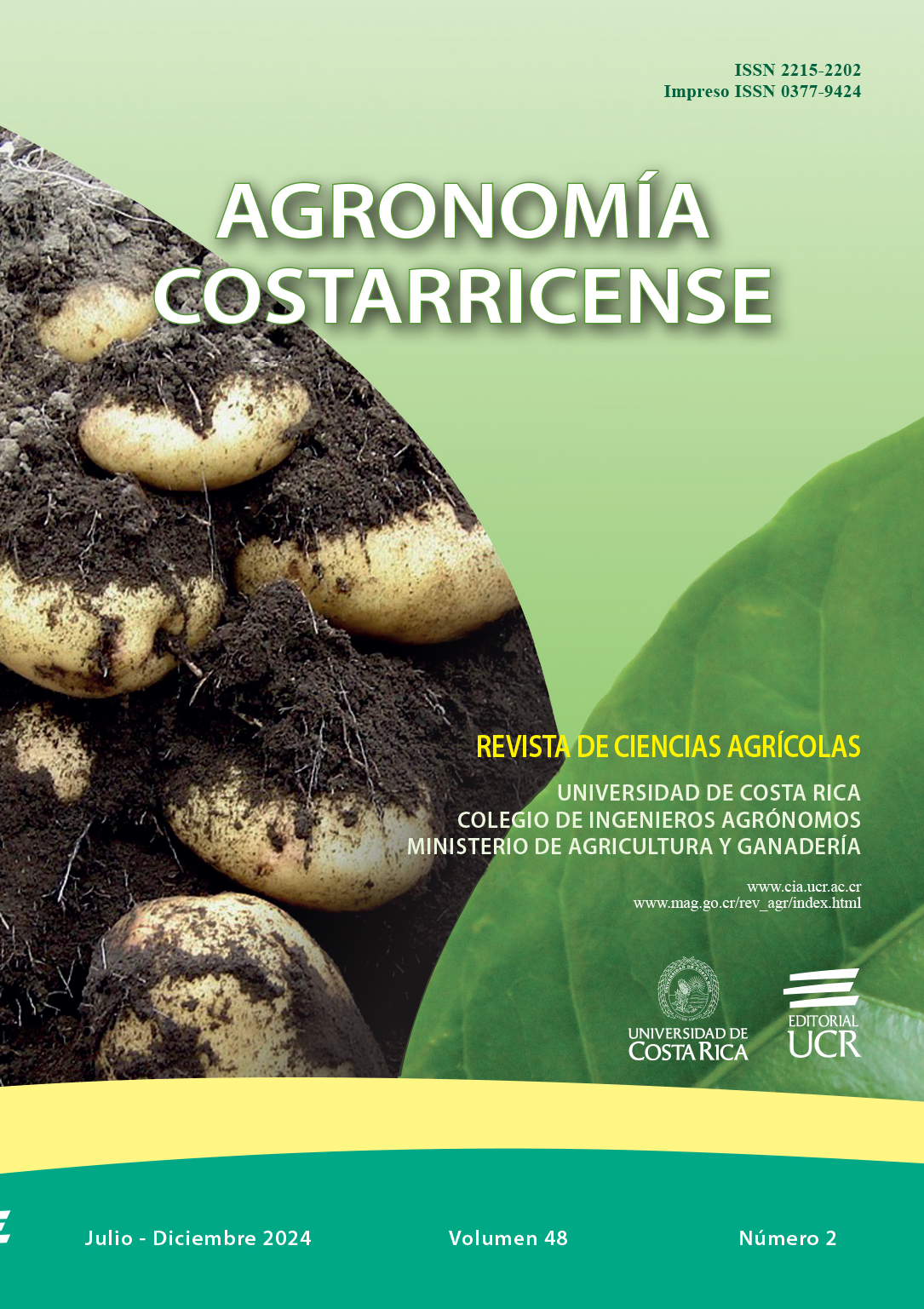Resumen
Introducción. La pérdida de suelo es un proceso natural y complejo, el cual se puede potenciar por condiciones climáticas y labores agrícolas como la mecanización. Una forma de suelo (muy poco conocida) se debe al sedimento adherido al producto al momento de la cosecha, el cual se pierde permanentemente de los sembradíos. La cuantificación de este sedimento es un factor adicional a la pérdida de suelo por erosión y los nutrientes que pueden perderse de una parcela. Objetivo. Cuantificar la pérdida de suelo por cosecha del cultivo en dos ciclos de cultivo de cebolla (Allium cepa L.) bajo tres implementos de labranza mecanizada. Materiales y métodos. Se establecieron parcelas (240 m2 cada una) en un diseño de bloques completos al azar, las cuales se sembraron con cebolla. Al momento de la cosecha del cultivo, se recolectó el sedimento adherido a la superficie de los bulbos y se estimaron los valores de pérdida de suelo para las parcelas evaluadas. Se realizaron análisis químicos de fertilidad, utilizando las metodologías KCl-Olsen y C/N total a los sedimentos obtenidos para calcular las pérdidas de nutrimentos y materia orgánica por labores de cosecha. Resultados y discusión. Se cuantificaron cantidades de sedimento entre 594,71 ± 471,93 y 1083,94 ± 78,45 kg ha-1 ciclo-1 que se pierde de los sembradíos de cebolla de forma irreversible. En adición, se pueden perder hasta 3,04 ± 0,27 kg de N, 0,15 ± 0,02 kg de P, y 1,16 ± 0,12 kg de K por hectárea por ciclo de cultivo. Conclusiones. Los resultados obtenidos son pioneros en el estudio de erosión y pérdida de suelo por cosecha del cultivo en Costa Rica, y pueden servir de referencia para futuros estudios de manejo y conservación de suelos.

Esta obra está bajo una licencia internacional Creative Commons Atribución-NoComercial-SinDerivadas 4.0.
Derechos de autor 2024 Agronomía Costarricense

